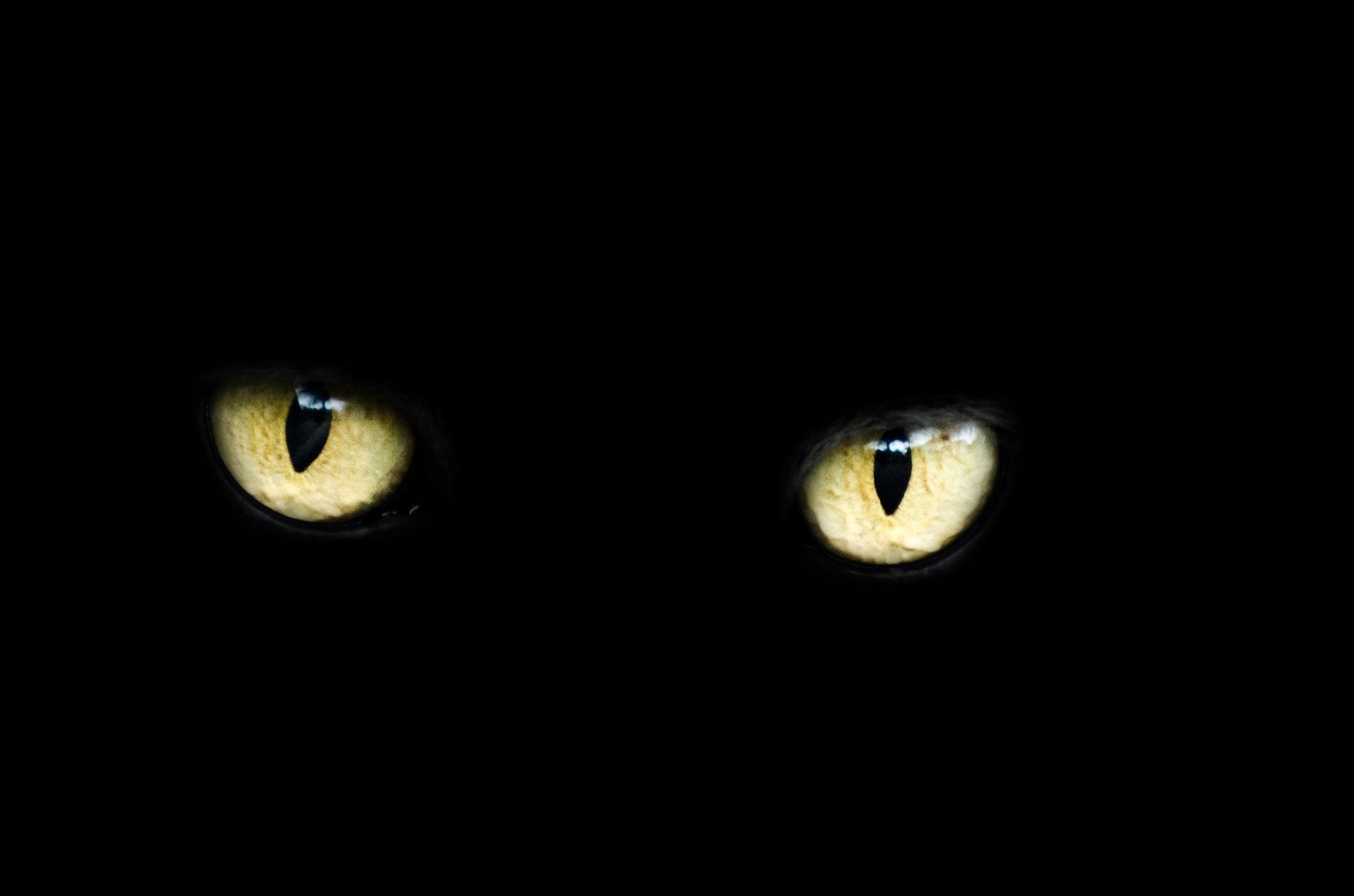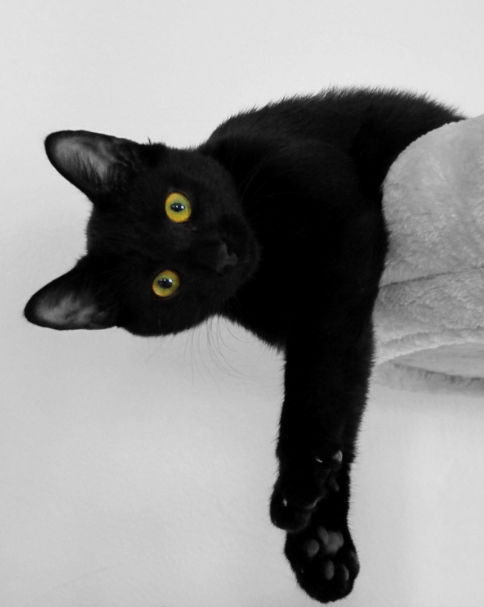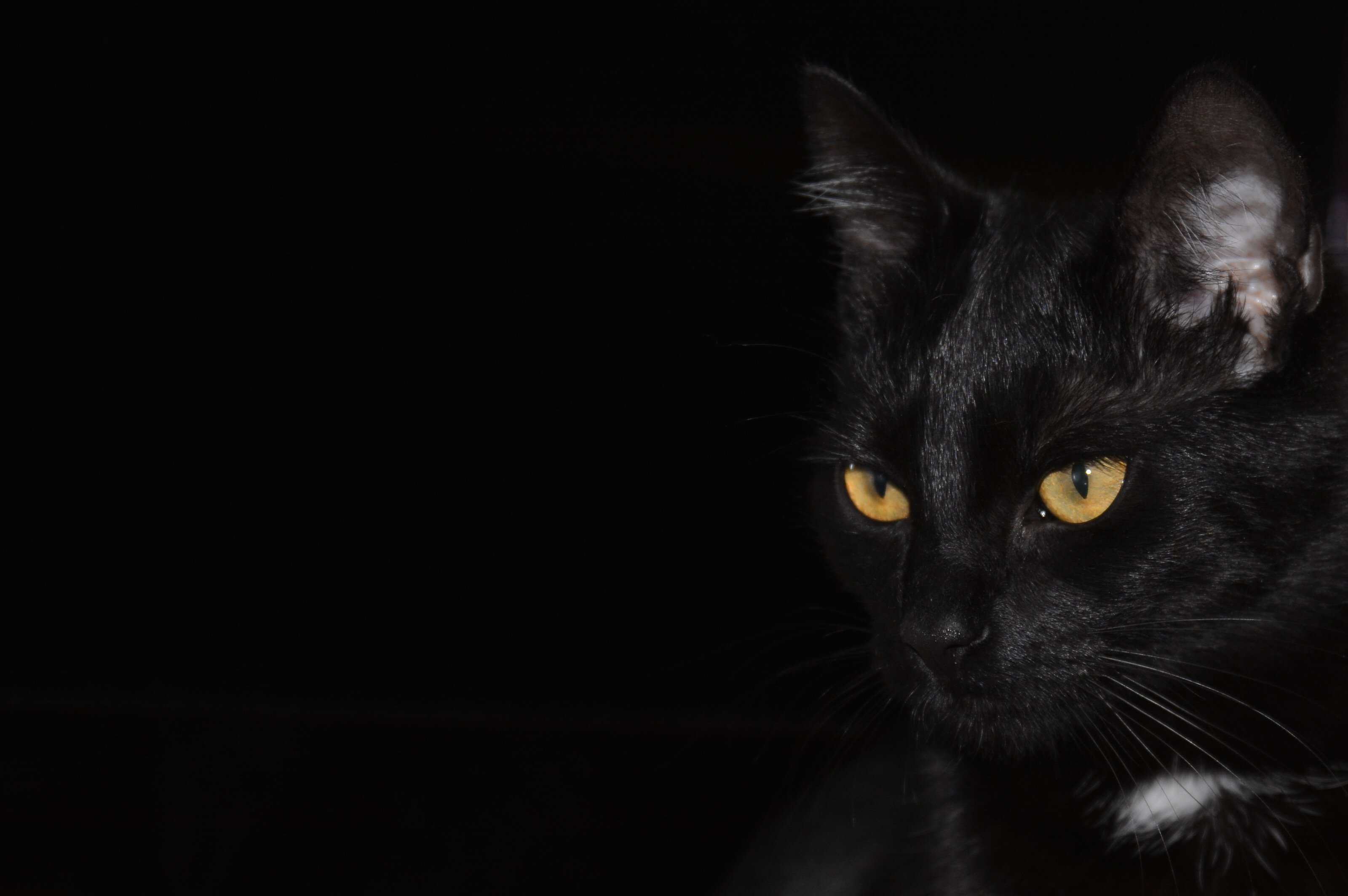Have you ever wondered how cats see the world? How does cat vision work? Eyes are very important for your cat. Cats are natural hunters. They domesticated themselves from wildlife. And, while hunting, they rely on their sense of smell, their hearing, and their vision. And while most people think that cats see in a similar way as dogs do, that is not totally the truth. In this article, you can find out how cats vision really work. We have listed 10 interesting things about cat vision. Reading through it, you will find out if cats really do see in the dark, why do their eyes glow, do they see colors and ultraviolet light, can they lose their vision and many more interesting facts. In the end, we listed some great photographs of Nickolay Lamm. In his gallery, he visualizes a difference between cats and humans vision.
See also: Introducing a Dog to a Cat – How to do it?
Characteristics of Cat Vision
 Cat Vision – Night Vision
Cat Vision – Night Vision
When we talk about cats and their vision, the first thing that comes to peoples minds is night vision. Do cats really have it, or is it just a myth? Cats need only 15 percent of the light humans need to see. We can say that night vision in cats is the partial truth because cats do see better than humans at night, but that doesn’t mean that they see in complete darkness. They just have better perception when it comes to low-light places. Now, why is that? We all know that cats elliptical pupils are oriented vertically. This allows cats to expand their pupils more widely than humans can. With this, there is more space for light to come in. And, this gives cats a possibility to see in low-light places.
Also, cats have more rods than cones (unlike humans). And, rods are more effective at absorbing light. But, on the other hand, this means that cats have to be careful during the day. Because of their ability to absorb more light through their eyes, daylight can damage their vision. (www.cookwarejunkies.com) Nevertheless, pupils work in a way that can control the amount of light coming in the eyes. That’s why daytime is also not a problem for cats. They just look with pupils closed as much as they can be closed.
Cat Vision – Glowing Eyes
Anyone who has a cat knows how do these glowing eyes look like. It’s like seeing an alien at night. Why night? Because this effect only happens at night. And, it is because this effect also has something to do with night vision. Cats retina has one part that is called tapetum lucidum. Tapetum lucidum has a reflective structure that increases the volume of light which allows cats to see better in dim light. Furthermore, the color in which cats eyes glow depends on the breed. Most of the cats’ eyes will glow bright green while others will bright yellow.
Cat Vision – Ultraviolet Light
Now, this is amazing. Something that was considered to be a myth in past is proven today. Cats, and dogs, really can see ultraviolet light (wavelengths below 400nm, but higher than 10nm). On the other hand, humans can see only wavelengths of 400-750nm. This is also another aspect of cats great vision in low light.
Cat Vision – Colorblindness
I have heard that people think dogs see only in black and white. But, apparently, people think that about cats too. To put it clear, this is just a myth. Of course cats, and dogs, cant see the same way we humans do, but that doesn’t mean the difference is so drastic. Do you remember those cones and rods we mentioned in the last paragraph? Yes, cats do have more rods than cones, unlike humans. But, while rods are more effective at absorbing light, cones are necessary for seeing colors. Some say cats are dichromats (having two types of cones). But, others say that they are trichromats (having three types of cones).
Nevertheless, this means they have some limit in seeing colors. In other words, cats cant see the full range of colors that humans can. It is because humans have at least 10 times more cones than cats. To sum it up, cats can see only color wavelengths in blue-violet and greenish-yellow ranges. And, color cats definitely cant see is red. We can even compare cat vision to a colorblind person.
Cat Vision – Colors of their Eyes
Anyone who is a great lover of cats knows that cats can have different colors of eyes. Just like humans or some other species. Cats eyes can be blue, green, brown, orange and yellow. Furthermore, some cats can have one eye in one color and another eye in different color. But, what is important to mention is that cats with blue eyes are even more sensitive to light. Because of that, if you have a blue-eyed cat, don’t give her light shockers early in the morning or when she wakes up.
Cat Vision – Third Eyelid
Yes, that’s right. Cats do have a third eyelid. It is situated between regular eyelids and the cornea. This third eyelid is giving cats some extra eye protection, and it has a gland that produces extra tears.
Cat Vision – Can Cats lose their Vision?
Unfortunately, cats can lose their vision too. You might have even came across some blind kitty. But, what causes their loss of vision? One of the causes can be Uveitis (inflammation of the middle portion of the eye). Another cause could be retinal detachment (the cause is high blood pressure). Furthermore, another cause of vision loss might be cataract formation (caused by unregulated diabetes). Lastly, traumatic eye injuries could also cause loss of vision. If your cat has any of these, take her to a veterinarian. A veterinarian will know what to do.
Cat Vision – Nearsightedness
Here is a disadvantage in cat vision. They are nearsighted. We humans can see objects clearly at 100 to 200 feet away. But, cats can see objects clearly only on 20 feet away. Such a big difference. Those cones we already mention also give us, humans, better resolution. Another reason for cats nearsightedness is their eye lenses and its shape. It is important to mention that cat vision is sharpest at 2 to 3 feet away from the object. On the other hand, if you put something right in front of your cat’s nose (within one foot away), your cat won’t see it. Pretty interesting, right?
Cat Vision – Peripheral Vision
Cats have a very big field of vision. While humans can see around 180 degrees around their heads, cats can see even more than 200 degrees. Cats can also see some very fast movements (up to 4 millimeters per second). But, like we mentioned in the last paragraph, cats do have a blind spot. It’s under their noses.
Cat Vision – Cross-eyed Cats
Whats interesting is that cats can be born with crossed eyes. Some suggest that these kinds of cats see in the same way humans do when they intentionally cross their eyes. But, that doesn’t necessarily mean they have more vision issues than cats with regular eyes. They were born with it and because of that, they are used to see in this way. They get along with it well and they can still be great hunters. The only thing that can create issues for cross.eyed cats is becoming too excited or frightened.
Nickolay Lamm photography – Difference between human and cat vision
Nickolay Lamm is a photographer that managed to capture how does cat vision look like. In his photos he represents how would we humans see if we got cat eyes. To make this project work, he took into a consideration every aspect of cats eyes. Their vision at night, their peripheral vision, colorblindness etc. And, he did all that with inputs from veterinarians and ophthalmologists. Take a look at this interesting gallery that shows the difference between human and cat vision:
- Nickolay Lamm – Cat Vision
- Nickolay Lamm – Cat Vision
- Nickolay Lamm – Cat Vision
- Nickolay Lamm – Cat Vision
- Nickolay Lamm – Cat Vision
- Nickolay Lamm – Cat Vision
- Nickolay Lamm – Cat Vision
We can see how great difference between cat vision and human vision can be. And, although cats have some advantages in their vision, there are some disadvantages as well. While they have a great “night vision”, cats are also nearsighted. We can also see that there are some myths regarding cat vision. Yes, cats can see great with low light, but that doesn’t mean they can see in complete darkness. Yes, cats can see fewer colors than we humans can, but that doesn’t mean they can see only black and white. So, seeing all this, what do you choose? Would you rather have your own vision, or would you exchange it for cat vision?










